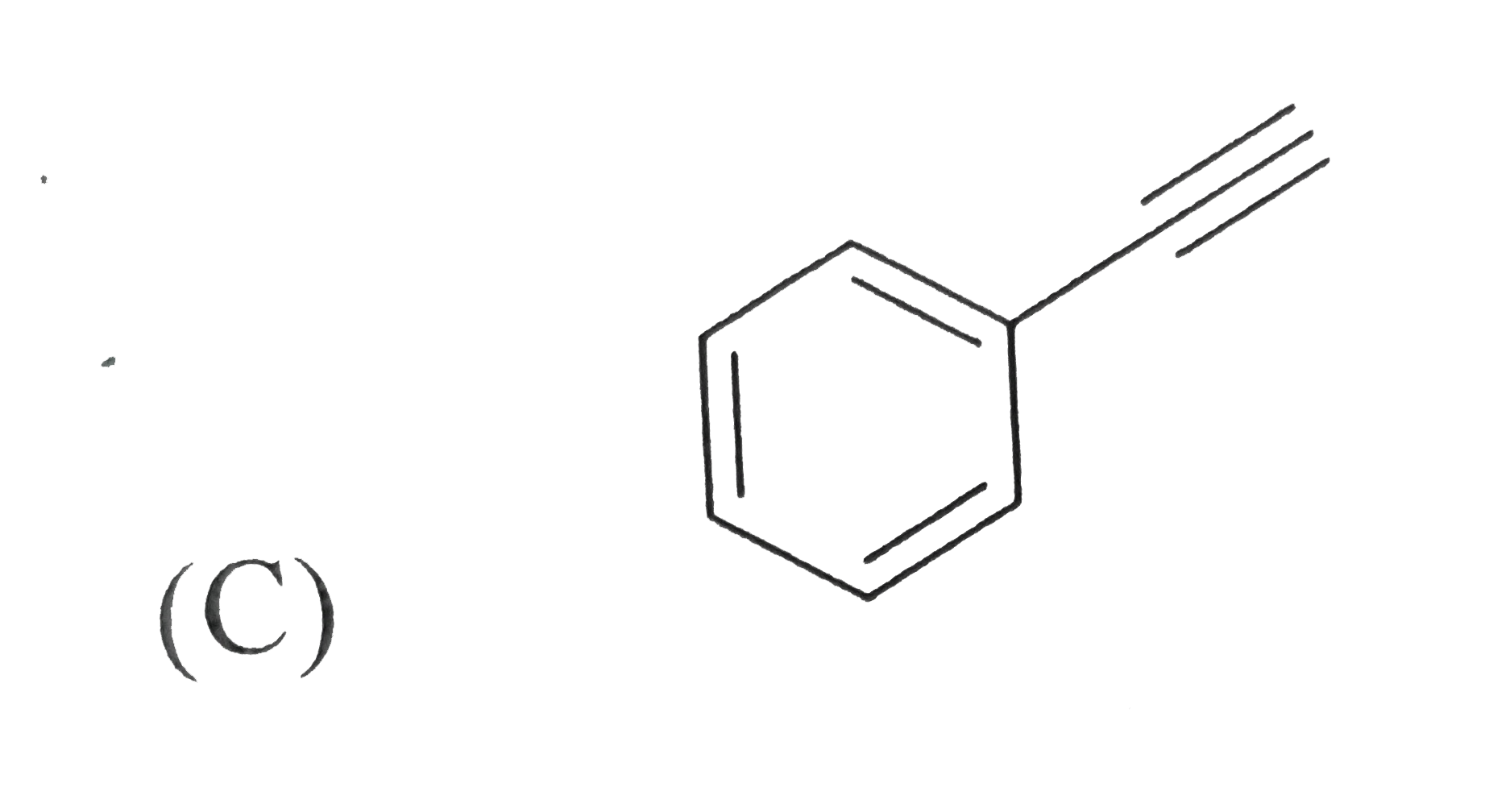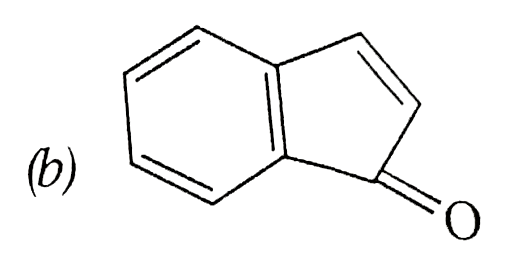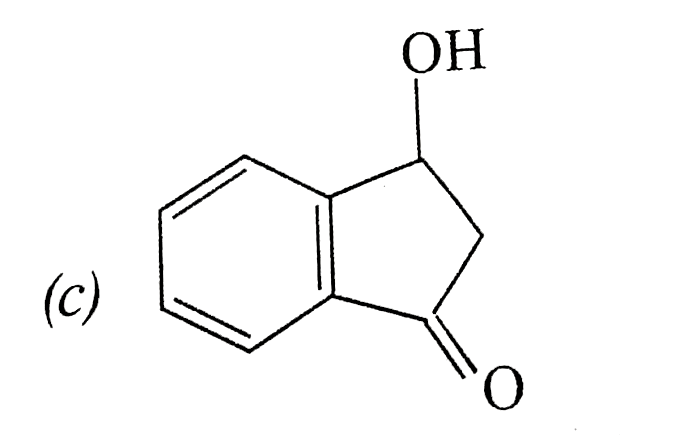Treatment of benzene with CO/HCl in the presence of anhydrous AlCl3/CuCl followed by reaction with Ac2O/NaOAc gives compound X as the major product. Compound X upon reaction with Br2/Na2CO3, followed by heating at 473 K with moist KOH furnishes Y as the major product. Reaction of X with H2/Pd−C, followed by H3PO4 treatment gives Z as the major product.
The compound Y is




To solve the question step by step, we will analyze the reactions mentioned and identify the compounds formed at each stage.
Step 1: Reaction of Benzene with CO/HCl in the presence of AlCl3/CuCl
- Reaction Type: This is the Gatterman-Koch reaction, which introduces a formyl group (–CHO) into the benzene ring.
- Product: The product formed is benzaldehyde (C6H5CHO).
Step 2: Reaction of Benzaldehyde with Acetic Anhydride and Sodium Acetate
- Reaction Type: This is a Perkin reaction. The benzaldehyde reacts with acetic anhydride in the presence of sodium acetate to form an α,β-unsaturated carbonyl compound.
- Mechanism: The acetate ion abstracts a hydrogen from the aldehyde, allowing the carbonyl carbon to attack the carbonyl carbon of acetic anhydride.
- Product (X): The major product formed is cinnamic acid (C6H5CH=CHCOOH).
Step 3: Bromination of Compound X (Cinnamic Acid) with Br2/Na2CO3
- Reaction Type: Cinnamic acid undergoes bromination in a basic medium.
- Mechanism: The base abstracts a hydrogen from the double bond, allowing bromine to add across the double bond.
- Product (Y): The major product formed is α,β-dibromocinnamic acid (C6H5CHBr-CHBrCOOH).
Step 4: Heating α,β-Dibromocinnamic Acid with Moist KOH
- Reaction Type: This reaction involves elimination, where the dibromide loses HBr to form an alkyne.
- Mechanism: The hydroxide ion abstracts a hydrogen, leading to the elimination of bromine and formation of a triple bond.
- Product (Y): The major product formed is phenylacetylene (C6H5C≡CH).
Step 5: Reduction of Compound X with H2/Pd-C
- Reaction Type: This is a hydrogenation reaction.
- Product: The product formed is ethylbenzene (C6H5CH2CH3).
Step 6: Treatment of Ethylbenzene with H3PO4
- Reaction Type: This reaction involves dehydration.
- Product (Z): The product formed is styrene (C6H5CH=CH2).
Final Answer
The compound Y is phenylacetylene (C6H5C≡CH).
- Reaction Type: This is the Gatterman-Koch reaction, which introduces a formyl group (–CHO) into the benzene ring.
- Product: The product formed is benzaldehyde (C6H5CHO).
- Reaction Type: This is a Perkin reaction. The benzaldehyde reacts with acetic anhydride in the presence of sodium acetate to form an α,β-unsaturated carbonyl compound.
- Mechanism: The acetate ion abstracts a hydrogen from the aldehyde, allowing the carbonyl carbon to attack the carbonyl carbon of acetic anhydride.
- Product (X): The major product formed is cinnamic acid (C6H5CH=CHCOOH).
- Reaction Type: Cinnamic acid undergoes bromination in a basic medium.
- Mechanism: The base abstracts a hydrogen from the double bond, allowing bromine to add across the double bond.
- Product (Y): The major product formed is α,β-dibromocinnamic acid (C6H5CHBr-CHBrCOOH).
- Reaction Type: This reaction involves elimination, where the dibromide loses HBr to form an alkyne.
- Mechanism: The hydroxide ion abstracts a hydrogen, leading to the elimination of bromine and formation of a triple bond.
- Product (Y): The major product formed is phenylacetylene (C6H5C≡CH).
- Reaction Type: This is a hydrogenation reaction.
- Product: The product formed is ethylbenzene (C6H5CH2CH3).
- Reaction Type: This reaction involves dehydration.
- Product (Z): The product formed is styrene (C6H5CH=CH2).
The compound Y is phenylacetylene (C6H5C≡CH).
Topper's Solved these Questions
- BOOK - JEE ADVANCED PREVIOUS YEARCHAPTER - JEE ADVANCEDEXERCISE - CHEMISTRY SECTION - I : Single correct Answer Type8videos
JEE ADVANCED
- BOOK - JEE ADVANCED PREVIOUS YEARCHAPTER - JEE ADVANCEDEXERCISE - CHEMISTRY SECTION - II : Multiple Correct Answer Type4videos
JEE ADVANCED
- BOOK - JEE ADVANCED PREVIOUS YEARCHAPTER - JEE ADVANCEDEXERCISE - SECTION 27videos
JEE ADVANCED
- BOOK - JEE ADVANCED PREVIOUS YEARCHAPTER - JEE (ADVANCED ) 2020EXERCISE - SECTION -III6videos
JEE (ADVANCED ) 2020
- BOOK - JEE ADVANCED PREVIOUS YEARCHAPTER - JEE ADVANCED 2020EXERCISE - SECTION-36videos
JEE ADVANCED 2020
Similar Questions
Knowledge Check
- Question 1 - Select One
Treatment of benzene with C∅HCl in the presence of anhydrous AlCl3/CuCl followed by reaction with Ac2∅NaOAc gives a compound X. Reaction of X with H2/Pd/c followed by treatment with H3PO4 gives another compound Y. The compound Y is :
A B
B C
C D
D
- Question 2 - Select One
Give the major product of the following reaction
 A
A B
B C
C D
D
- Question 3 - Select One
Heating of 2-chloro-l-phenylbutane with EtOK/EtOH gives X as the major product. Reaction of X with Hg(OAc)2/H2O followed by NaBH4 gives Y as the major product. Y is :
A B
B C
C D
D
How many toluidines on reaction with NaNO2/HCl followed by H3PO2 treatment gives Toluene.
View SolutionHow many toluidines on reaction with NaNO2/HCl followed by H3PO2 treatment gives Toluene.
View SolutionGive the major products of following reaction :
 View Solution
View SolutionGive the major product of following reaction
 View Solution
View SolutionHeating of 2-chloro-1-phenylbutane with EtOK/EtOH gives X as the major product. Reaction of X with Hg(PAc)2/H2O followed by gives Y as the major product. Y is :
View Solution



